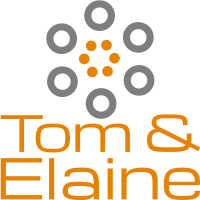Team Isn’t a 4-Letter Word
Many of us are embarrassed to hear that there will be a teambuilding, morale improving, employee engagement, team productivity workshop, or even if we have to go. We are so offended. Why is it that team dynamics can be so challenging? Why is it that teambuilding can be so negative?
Many people believe team building is a waste of time and money. Activities that encourage teamwork and team building don’t yield a tangible return. To achieve organizational goals, it is crucial that employees work together. But how do you get them to work in unison?
Team building often fails because the basics don’t get addressed. Organizations don’t pay enough attention to individual motivation factors and personality styles. They also lack standard operating procedures that can help foster organic team dynamics. You can leave huge gaps in your team building framework if you don’t understand where each employee is at all and what their contribution to the organization.
Teamwork is more than just group work. It’s a deeper concept than that.
ActionCOACH focuses on six key elements to building a winning team. The foundation of the process focuses upon individual contributors and their importance to team productivity. These six key ingredients are essential to building a winning team:
- Strong Leadership
- Common Goals
- The Rules of the Game
- Action Plans
- Support Risk Taking
- 100% Involvement & Inclusion
Leadership is key
Leadership must be transparent and demonstrate high integrity. Leaders who are strong in their leadership role model good behavior and are clear about what they expect. Leaders who are strong understand the importance of building up their team members.
Common Goals
Allow team members to determine what is most important and how they fit within the organizational framework. Clear vision and mission, core values, and culture points all help to clarify goals.
The Rules of the Game
These are standard operating procedures that provide clear guidance on how things should be done. These rules set clear expectations for the behavior and actions of the team. Because they are specific and clearly outlined, there is little room for interpretation. They relate to the company’s desired outcomes.
Action Plans
These plans are designed to help team members achieve their goals and provide a clear roadmap. These plans provide clear direction and set expectations for team members.
Support Risk Taking
Innovation can be ignited within an organization and motivated team members to make new contributions. To help teams succeed, it is crucial to learn from mistakes. Create a culture that does not punish mistakes made by team members but offers opportunities to learn and improve.
100% participation and inclusion
It is crucial to create an environment that encourages participation. Everyone in the organization must have a voice.
True teamwork is more than just the sum of its parts.
Clear communication, transparency, timely feedback, and clear roles and responsibilities all help to create a team dynamic. If a team member is motivated and understands their role and how it affects the whole, they will be able to function and act in a way that benefits them and their personal goals.
TEAM does not have to be a four letter word. It needs to be transformed into a rallying cry.

